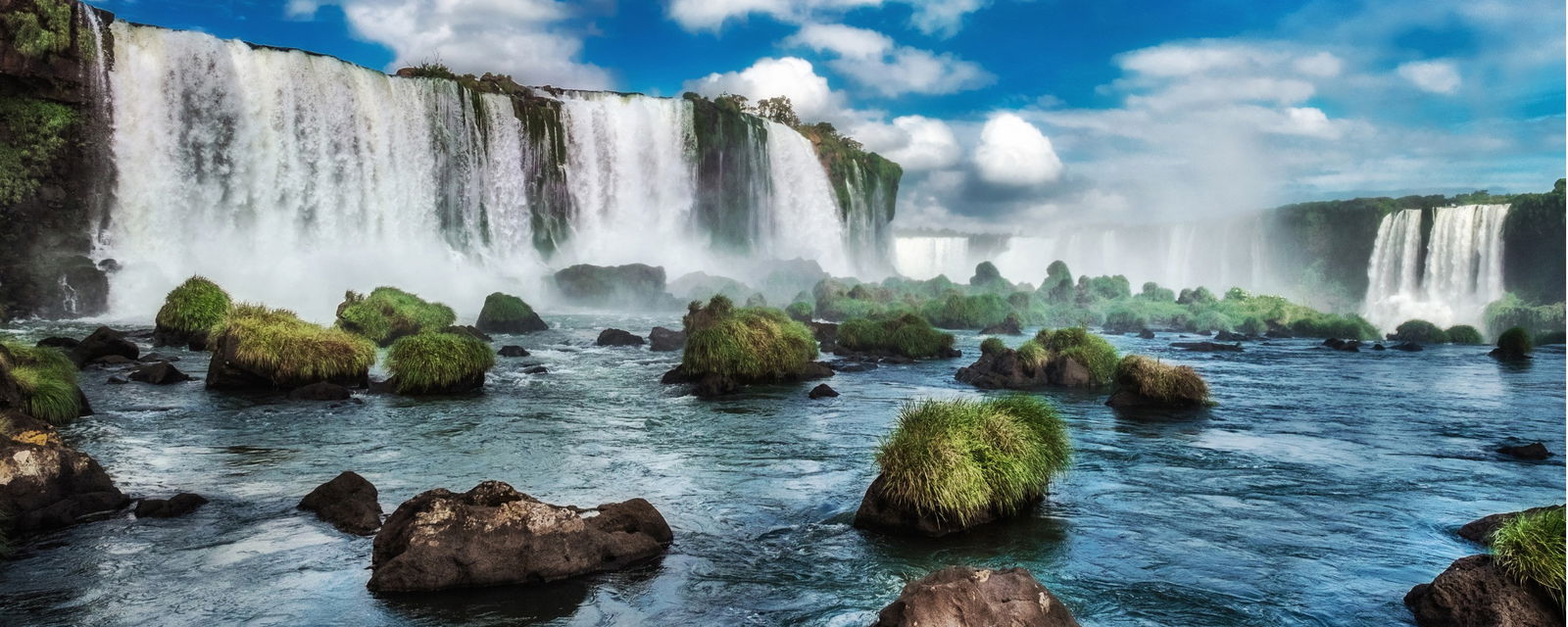


A smaller province in the northeast corner of the country, Misiones’ location is what makes it one of the most fascinating places to visit in Argentina. With Paraguay to the northwest and Brazil to the north, it’s also a great locale from which to branch out and explore other parts of South America. Perhaps though the biggest draw of the region is the Iguazu Falls. These falls divide the upper and lower parts of the Iguazu River and are situated on the border with Brazil. All told, this represents the largest waterfall system in existence. Truly a stunning natural display. Besides the scenic beauty, Misiones is also home to the fascinating remains of a 17th century Jesuit mission, as well as the acclaimed Yerba Mate festival—celebrating the national drink of Argentina which is far more than merely a beverage, as many consider it to be a pastime as well.
Rainforest abounds in this amazing park. With train rides to the Iguazu Falls—the largest in the world—visitors get to experience a scenic trip like no other. The park also features Devil’s Throat, an unbelievable U-shaped cascade along with many indigenous species of plant and animal life.
Located just outside of Puerto Iguazu, La Aripuca is a theme park of sorts paying homage to a variety of regional as well as endangered trees. There are guided tours and even one that takes you to a giant animal trap constructed completely of trees.
Designated in the 80s by UNESCO as a World Heritage Site, San Ignacio Mini really does transport visitors to a time past. Originally built in 1610 by Jesuit priests, the ruins today have been deemed one of the best preserved. It has become one of the most visited places in the country.

Iguazu Falls and Misiones' winter, from June to August, offers mild weather with temperatures ranging from the low 50s to mid-70s Fahrenheit. It's an ideal time to visit this region in Argentina as it allows for comfortable exploration of the stunning Iguazu Falls and the surrounding natural beauty. Winter is perfect for viewing the falls with less rainfall, resulting in spectacular cascades and lush greenery.

Spring in Iguazu Falls and Misiones, from September to November, brings pleasant temperatures with highs in the 60s to 80s Fahrenheit. The region's landscapes bloom with colorful flowers and the wildlife becomes more active after the winter months. Spring is ideal for taking guided tours to the Iguazu Falls, where visitors can experience close encounters with the majestic waterfalls and enjoy boat rides through the falls' misty waters.

Iguazu Falls and Misiones' summer, from December to February, can be hot and humid with temperatures in the 70s to mid-90s Fahrenheit. It's a vibrant time to visit the region as the lush vegetation flourishes, and the falls are at their fullest. Summer offers opportunities for enjoying the diverse flora and fauna of Misiones' nature reserves and national parks.

Fall in Iguazu Falls and Misiones, from March to May, brings mild temperatures with highs in the 60s to 80s Fahrenheit. The region's landscapes display rich autumn colors, creating a picturesque backdrop for exploring the natural wonders. Fall is ideal for visiting the Jesuit Missions of Guaraní, a UNESCO World Heritage site that preserves the cultural heritage of the indigenous Guaraní people and the European missionaries.
